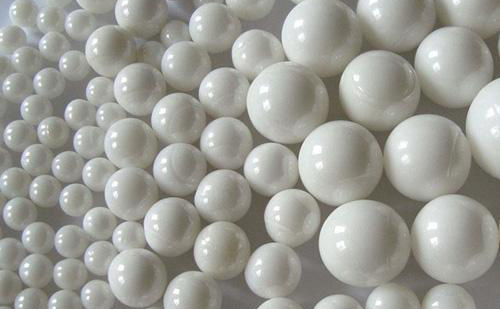As the fineness requirements of materials become higher and higher, the use of sand mills is becoming more and more common, and there are more grinding media on the market. How to choose a grinding media that is more suitable for your own production process and conditions is one A more critical and troublesome thing. Shanghai Zhimo New Materials will make a simple analysis on the following aspects.
1. Chemical composition
Grinding media can be divided into glass beads, ceramic beads (including zirconium silicate beads, composite zirconium beads, alumina beads, rare earth metal stabilized zirconia beads, etc.), steel beads, etc. according to different materials. Due to the difference in chemical composition and manufacturing process, the crystal structure of the grinding beads is determined. The dense crystal structure ensures the beads' high strength, high wear resistance and low ink absorption rate. The different percentages of various components determine the specific gravity of the grinding beads. The high specific gravity provides a guarantee for high grinding efficiency; the natural wear of the chemical composition of the grinding beads during the grinding process will have a certain impact on the performance of the slurry, so in addition In addition to considering the low wear rate, the chemical elements of concern are also factors to be considered. Such as grinding tape powder or other electronic component slurry, metal Fe, Cu and other elements should be avoided. Grinding beads containing Fe2O3 or CuSO4 are not the choice, so choosing zirconium beads is often a common choice in this industry; such as grinding pesticides In terms of medicine and biochemistry, heavy metals are the scrupulous elements, while PbO is the most common ingredient.
2. Physical properties:
(1) Density of grinding media: Under normal circumstances, the greater the specific gravity of the grinding beads, the greater the impulse, the higher the grinding efficiency, and the wear on the contact parts (inner cylinder, dispersion disc, etc.) of the sand mill is relatively large, so The combination of viscosity and flow rate of the slurry becomes a key factor. Low density grinding beads are suitable for low viscosity slurry, and high density grinding beads are suitable for high viscosity slurry.
(2) The hardness of the grinding media: For example, from the wear of the grinding beads on the contact parts of the sand mill (dispersion disc, rod pin and inner cylinder, etc.), the grinding beads with higher hardness will wear more to the contact parts, but they can By adjusting the filling amount of the beads, the viscosity of the slurry, the flow rate and other parameters to achieve the best optimization point. (3) The particle size of the grinding media: According to Shanghai Zhimo New Material’s point of view, the size of the grinding beads determines the number of contact points between the grinding beads and the material. The smaller the particle size the more contact points under the same volume, theoretically The grinding efficiency is also higher; on the other hand, when grinding materials with relatively large initial particles, such as 100 micron slurry, the beads with D=1mm may not be used because the impulse of the small beads cannot reach sufficient grinding and dispersion. In this case, beads with a larger particle size should be used.


